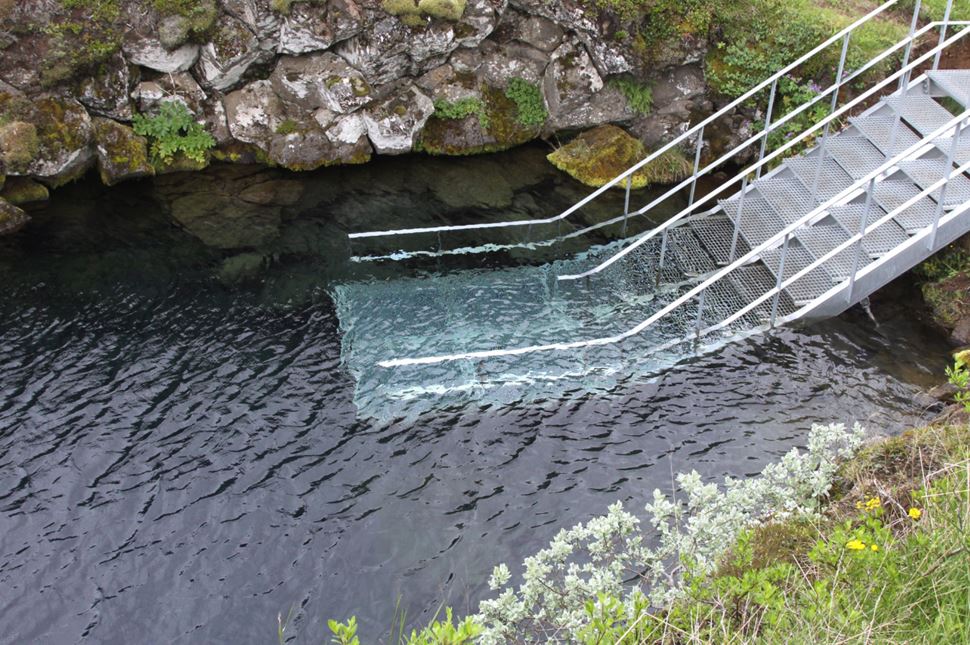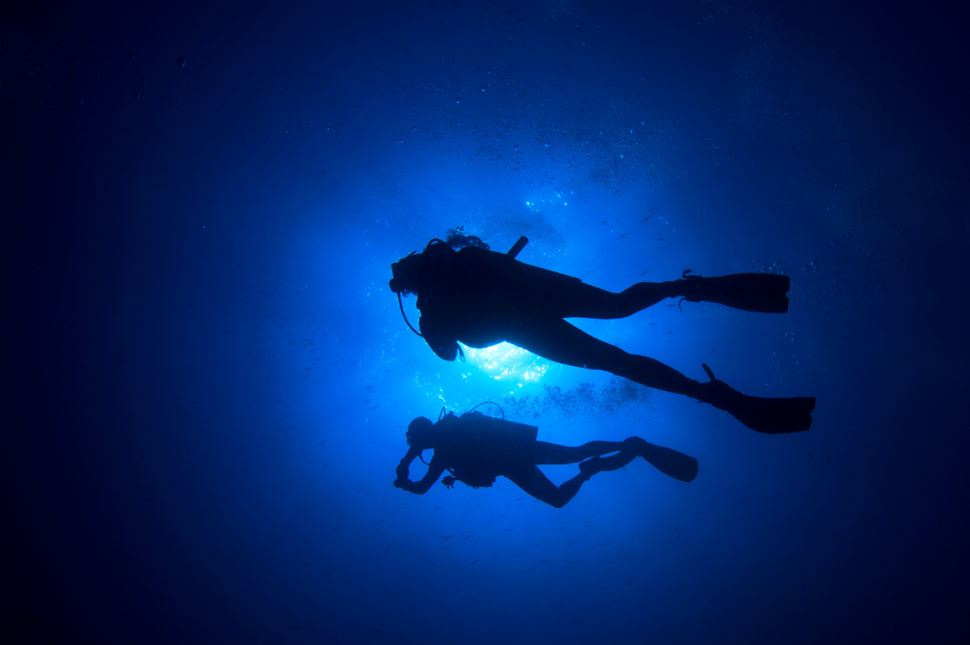
Snorkeling vs. Scuba Diving: What’s the Difference?
The Silfra Fissure in Southwest Iceland is considered one of the best snorkeling and diving spots on Earth.
Diving head first into the North Atlantic Sea or a chilly glacial lake may not be in everyone's interest. But those who brave Icelandic waters are well rewarded with crystal-clear visibility, stunning submerged rock sculptures, and sea life that is far from what is experienced by the typical diver.
There is a reason that snorkeling and diving in Iceland are among this island nation’s top to-dos. But with so many spots dotted across the country, how do you choose the best one for you?

Steps leading down into Silfra Fissure
If you've done any research into scuba diving in Iceland, then you are bound to have come across Silfra Fissure. This body of water is located in Þingvellir National Park, the only place on land where you can see where two tectonic plates meet. In fact, when you dive at Silfra Fissure, you are diving between the North American and Eurasian tectonic plates - a truly once-in-a-lifetime experience.
The water here is fed by a glacial river and is some of the clearest in the world. The site is protected as a part of the UNESCO World Heritage list, making it a great diving location for those looking for something unique.

Davíðsgjá Crack in Silfra Fissure, Iceland
If Silfra feels like too much of a safe and calm dive, then its darker and larger sibling, Davíðsgjá, might be the best location for your next dive. Although its visibility can depend greatly on the weather compared to its smaller counterpart, local divers are a fan of Davíðsgjá. There is some wildlife to see within these waters, with trout that grow to substantial sizes and dwarf fish hiding in rocky ridges.
Located in the North, near the town of Akureyri, Strýtan is a dive that showcases the epic geothermal activity in Iceland. To find the true wonder of this diving location, you’ll need to dive to depths of 70 meters to find a geothermal chimney. This chimney is a hot spring that releases hot water into the fjord. The minerals within the geothermal water coagulate when it gets cooled by the North Atlantic Ocean. This process has left behind a 55-meter 'chimney' constructed of limestone. Divers can head down to the depths to see the activity firsthand and explore the unique flora and fauna that come with it.
If you're looking for a dive that involves more marine life, then Garður is the best dive for you. Garður translates to “garden," and its name is definitely fitting. You can find over 42 species of algae here, and they provide a colorful home to plentiful marine life. Not far from the garden, there is a dense kelp forest which holds many different fish species. Diving in Garður showcases how and what lives within the cold waters of the North Atlantic. It also highlights the fragility of the ecosystem and the importance of protecting it.
Although not very deep, Nesgjá is a relatively large lagoon for scuba diving. This freshwater fissure is filled with water that has filtered through lava rocks, leaving it incredibly clear. If your main concern as a diver is how clear your mask is, the visibility within this fissure will leave you in disbelief. Nesgjá is also a perfect location for snorkeling.

The best time to dive in Iceland depends on what you want to experience and your preference. If you are looking to get a few dives in, summer is the best. Between June to August, there are more opportunities to head into the water. Combine milder temperatures, better visibility, and more active underwater life; summer is the peak of diving in Iceland.
During the winter, the water is at its coldest (between 2°C to 4°C) but can still offer excellent visibility. Diving in Iceland's fissures is available all year round.
While it is technically possible to dive alone in Iceland, booking a guided diving tour is highly recommended, especially if you are not familiar with the local conditions, safety requirements, underwater topography, and specific dive sites. Iceland's water environment can present several challenges with cold water temperatures and unique geological features.
Best Seller
